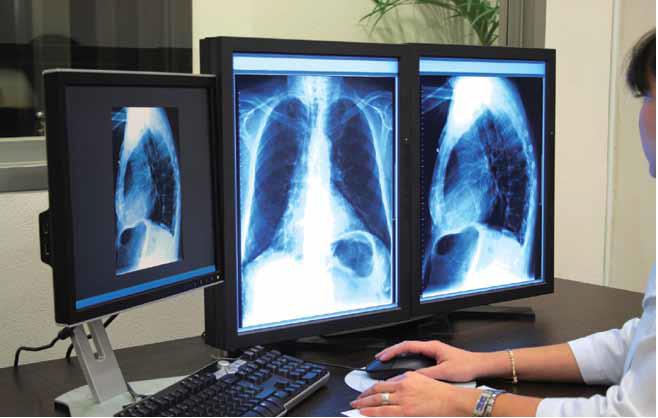
Modelling the Future
The increasing proportion of imaging modalities that generate images in digital form has lead to the development of digital image management systems. Such systems referred to as Picture Archiving and Communication Systems (PACS) are emerging in clinical and radiological environments. PACS is an integrated set of information technology systems designed to provide a complete solution for image management in a film-less radiology department. Further to its importance in the radiology department, emergence of high-end modalities in cardiology and oncology requires archiving and post-processing of images where PACS is becoming mandatory.
When introducing PACS to the hospital environment, it is critical to establish a Hospital Information System (HIS) or Radiology Information System (RIS) beforehand. Integration of RIS with PACS is a defining trend in the imaging market.
Gaurav Mundra, Director & Chief Operating Officer, Truworth Infotech Pvt Ltd, while sharing his perspective on this technology, said, “RIS/PACS is going to be the next big wave in Healthcare IT for larger hospitals. They will need special support in integration with existing systems and legacy equipment. They must look at the cloud as an option to expensive hardware and maintenance. Pricing should move to an ASP model too.”
An integrated system, which already knows certain information like patient’s history, reason for the examination, and the tests ordered, these systems can now automatically predict or rather anticipate specific views to the radiologist. It lessens the manipulation of image manually and gives more time to the expert for faster uations.
When introducing PACS to the hospital environment, it is critical to establish a HIS or RIS before a PACS. Often a retrospective merger of the PACS database lends itself to higher costs and data entry inconsistencies. All components of HIS or RIS and PACS must also be bi-directional and integrated fully with electronic patient records if present. If this is not coordinated, a hospital may find itself film-less in the radiology department, but resigned to copying images on costly laser film for other departments to use, which is an incredibly costly state of affairs.
Protocols
According to Frost & Sullivan technical insights, interactions between PACS and radiology RIS require compatible hardware, a common protocol for handling the data, and commensurate operational definitions. However, PACS and RIS are based on different protocols. PACS operates on the Diagnostic Imaging and Communications in Medicine (DICOM) standard, while RIS operates on Health Level Seven (HL7). DICOM is a transmission protocol that formats, stores, prints and transmits images to and from the imaging modalities and the PACS. HL7 is used to register patients, process orders, and store reports, but it cannot manage DICOM image data. In order for the PACS to do its job, it must be able to communicate with RIS. Therefore, interfaces are used to create an interface between the two systems. The interface (also known as a PACS ‘gateway’ or ‘broker’) is a hardware- and/or software-based module that allows PACS to communicate with the RIS. However, it has its drawbacks, including added cost to the PACS, and a potential point of failure that may result in orphaned studies (studies that are ‘lost’ or inaccessible to the data system).

“More hospitals are budgeting for technologies like PACS based on the positive experience and advantages offered to existing clients who have opted for this technology”
Dr Ashish Dhawad
Founder & CEO
Medsynaptic Pvt Ltd

Most Commented